Exploring School Choice and The Parent Revolution with Dr. Corey A. DeAngelis | LPP Ep. 965/14/2024 🎧 Join me on the Let People Prosper Show as I dive into a crucial discussion with Dr. Corey A. DeAngelis, a top voice in educational freedom and senior fellow at the American Federation for Children.
We unpack his latest book, "The Parent Revolution: Rescuing Your Kids from the Radicals Ruining Our Schools." Don't miss out as Dr. DeAngelis sheds light on: 👉 The current landscape of school choice in the U.S. 👉 Why school choice is essential and the challenges it faces. 👉 What the future holds for school choice and education savings accounts. 🔗 Follow @DeAngelisCorey on X for more updates! 💬 Like, subscribe, and share to support vital conversations about educational freedom. For more deep dives and updates, subscribe to my newsletter at vanceginn.substack.com and check out vanceginn.com for more resources. #EducationReform #SchoolChoice #ParentRevolution
1 Comment
In today's episode of the "Let People Prosper" podcast, which was recorded on February 27, 2023, I'm joined by Randan Steinhauser, who shared her insights on School Choice, including:
Randan Steinhauser’s bio and other info (here):
Get this: For the low price of more than 16,000 tax dollars per student each year, your child can receive one-size-fits-all education that too often prioritizes woke ideology over workforce readiness. What a bargain!
Maybe that’s why so many families have left the public education system over the past few years. School shutdowns, mask and vaccine mandates, and even the lack of safety in the public education system have parents running for the hills. They understand that the deal they’re being offered isn’t a deal at all and that the public school system is broken and in need of serious repair. Teachers have also started leaving the profession in droves. They’ve realized they have little to no negotiating power for better pay or support because the teacher market has a monopsony, with public schools being the dominant consumer of their services. Lack of funding isn’t the problem, as inflation-adjusted total per-student revenue increased by 25% across the country from 2002 to 2020 . So, what's the issue? Schools run by governments and funded by taxpayers, known as “public schools,” fail the economic test of being a standard public good and are designed to benefit politically motivated bureaucrats , not parents, teachers, or students. Regardless of whether these government schools are the best option for their child, parents are forced to pay taxes to fund them. Parents in less-privileged situations are usually stuck sending their children to the local government-run school, while wealthier parents may have the luxury of choosing to pay for another path. But it doesn’t have to stay this way. Some states are already showing us how to improve the education system through school choice . Education freedom puts education funds where they belong: in the parents’ pockets and out of the hands of self-interested bureaucrats. Former Arizona Gov. Doug Ducey started the school choice revolution last year with the Empowerment Scholarship Accounts . And this week, Iowa Gov. Kim Reynolds signed a universal school choice bill into law. Both states created education savings accounts that will give families about $7,000 per student per year to spend on any school-related expense, including private school tuition, home-school curriculum, tutors, etc. Of course, Democrats and others tied to the government-schooling monopoly have found reason to raise alarm bells over this students-first movement. And they’re diligently spreading misinformation, including arguments that school choice would increase inequality. But the opposite is true. With an Arizona- or Iowa-style school choice solution, all students receive the same financial support, regardless of their parents’ income, and public schools still receive funding, even if parents choose another option. In fact, school choice breaks public schools’ monopoly and levels the playing field more than any other reform. These policies make sure that single, working, and disabled parents have the exact same educational resources for their children as wealthier parents. Breaking the monopsony situation through school choice would benefit teachers. Suddenly, public schools would have the incentive to lower costs and improve pay for quality teachers so there are better outcomes, and teachers would have more job options. In other words, schools would be forced to compete. That’s why school choice has been proven to improve the quality of public schools — competition helps increase incentives to hire and keep good teachers and provide a better curriculum. And if government school enthusiasts are concerned about losing funding, they should first ask themselves why those schools would lose funding if they’re as good as the education establishment claims. Our public school system is a failing bureaucratic nightmare that puts students last. And this is contributing to fewer education outcomes, more poverty, and higher crime. School choice can — and will — change that. Originally posted at Washington Examiner The extortionate cost of higher education continues to rise and is unlikely to moderate soon. From 2000 to 2020, college tuition and fees nationwide rose more than three times faster than general price inflation and more than twice as fast as average hourly wages.
Put simply, college is unaffordable to many and becoming more out of reach for many more. Making matters worse, the Biden administration has proposed to attempt to solve this problem with record levels of new government spending. This is on top of the billions of dollars Congress has already allocated to more than double the Department of Education’s most recent annual budget. Biden wants a 41% increase in the department’s pre-pandemic budget along with “free” college for families earning less than $125,000 annually and “free” community college for all, together with a long list of other costly, socialist-style programs. Of course, nothing is free, as the cost to taxpayers and students will be much higher in terms of taxes, lower quality education, and waiting lists. This proposal is another D.C. idea of throwing more money at problems, even though that fails every time. The U.S. spends roughly twice the amount on higher education per student as the average spent by OECD countries. Our problem is not lack of resources, but lack of vision. Driving higher tuition is excessive government intervention with increases on the demand side from subsidized student loans, Pell grants, and other factors, and suppression on the supply side through restrictions and accreditation limitations on new institutions and opportunities for competition. So, what justifies more than doubling of the price of higher education? The quality of instruction has not doubled. Neither has the student-to-teacher ratio. Students are not earning substantially more post-graduation, and in fact are graduating with more debt than ever as the total student loan debt now exceeds $1.7 trillion. If student outcomes are not improving, then where is the money going? In a word: administrators. Administrative staff has grown substantially faster than faculty, to the point where there are now more administrators than faculty at a typical university. From 1987 to 2012, colleges and universities nationwide more than doubled their administrative staffs. The portion of college budgets devoted to teaching—which is the actual mission of education—has fallen substantially. The source of this spendthrift administrative growth is government subsidies for higher education. As grants, student loans, and other state and federal funding have increased, institutions of higher education have lost the need to spend efficiently. They waste these taxpayer dollars on profligate administrative expenditures, knowing full well that Uncle Sam (read: You!) will keep the assistance coming. The normal free-market mechanism of competition which keeps prices down has been abrogated by this heavy-handed government intervention. The “profits” gained by these public institutions would bring about competitors in the private market, but that’s not possible given the restricted supply and limited accreditations, which is why the inflated demand simply pushes up tuition at rapid rates. Instead of doubling down on government failures like these, it’s time to do something different. In Texas, we can temporarily limit tuition growth via Senate Bill 167 in the Texas Legislature. This bill would provide a viable alternative to more spending proposed by the Biden administration. It temporarily limits tuition at public colleges and universities to price inflation for the next five years. This would better match the cost-of-living adjustment received in wage growth by many families and taxpayers. While the limitation does not include fees, tuition is a much larger portion of the total cost of attending these public schools. The effect will be to force these public institutions to rein in the number of administrators (and associated costs), along with other inefficiencies. If these institutions foolishly cut spending on instruction, then students and faculty can simply leave and go to another school. A perfect example of this policy, voluntarily prescribed, is Purdue University—a public institution of higher education in Indiana that is comparable in size to the University of Texas and Texas A&M University. Purdue has kept tuition frozen for the last decade, during which its inflation-adjusted funding from the state legislature has actually decreased. Clearly, restraining the cost of tuition can be done—not by expanding government intervention, but rather by better managing the resources provided to these institutions, and ultimately through competition. If we want things in higher education to change, then we must change them. Otherwise, they will continue as they are, unaffordable as that may be. https://thecannononline.com/making-higher-education-more-affordable/ Vance Ginn, PhD, is chief economist at the Texas Public Policy Foundation, a 501(c)3 nonprofit, nonpartisan research institute in Austin.
Texas’s public higher education systems can withstand a temporary tuition freeze. SB 167 would freeze tuition for 5 years in response to the COVID-19 pandemic, and tuition would be adjusted by the previous year’s change in the consumer price index (CPI). This sort of freeze will be a step in the right direction, and the temporary nature of the freeze will allow for the results of this action to be evaluated to determine if it is working better than the current flawed approach. Tuition freezes have been successfully instituted by other public colleges. Testimony in Support to the Texas Senate Committee on Higher Education https://www.texaspolicy.com/senate-bill-167-government-failure-in-higher-ed/ In a recent poll, parents’ top concern was whether their children will miss in-person school instruction time. And they have good reason to be concerned as 67% of teachers said completion rates of student assignments were worse than in-person instruction.
This hurts disadvantaged students the most, as the Texas Education Agency recently noted that students in low-income families across the U.S. had a drop of 55.6% in online math coursework whereas those in middle-income families had a 34.2% decline and in high-income families actually had a 4.8% increase. These losses in students’ participation in learning can contribute to lower lifetime earnings, with a troubling racial achievement disparity. One study finds that the educational level of the average black or Hispanic student is already two years behind the average white student. These differences are based on multiple factors, including place of residence and wealth disparity. Delaying in-person instruction due to fears about COVID-19 will exacerbate this disparity. That study notes that if in-person instruction doesn’t start until January 2021 across the U.S., then while “white students would earn $1,348 a year less (1.6% reduction) over a 40-year working life, the figure is $2,186 a year (3.3% reduction) for black students and $1,809 (3.0% reduction) for Hispanic ones.” Add to that how disadvantaged students tend to lose educational progress during school breaks as there’s usually less parental involvement and resources available to them than other students. Just think of how months of missed in-person instruction would set them back. Even if government schools were to educate every student at the same level, the disparity between races and socioeconomic statuses will grow without the choice of in-person instruction. Unfortunately, minorities and poor Texans will suffer the most from this policy choice but would benefit most from that choice. Despite these concerns, Austin ISD and many other school districts across the state have already decided to have only virtual education for the first few weeks of the school year. But what of educators’ fears? Pediatricians, educators, and superintendents from organizations across America recently released a letter noting, “Returning to school is important for the healthy development and well-being of children, but we must pursue re-opening in a way that is safe for all students, teachers and staff. Science should drive decision-making on safely reopening schools.” The Austin Public Health Interim Health Authority Dr. Mark Escott recently told Travis County Commissioners that having in-person instruction would put the lives of the 192,000 students in Travis County in jeopardy. While he accurately noted that there have been no reported COVID-19 deaths of those under 19 years old in Austin/Travis County, he said there could be “between 40 and 1,370 deaths in that age group.” But given flaws in the modeling, these projections are highly suspect. First, Dr. Escott couldn’t use local data because there were no deaths among school-age children, so he resorted to using China’s data—where there was one death out of 965 cases of those 19 years old or younger. But extrapolating those data from a communist country like China is a poor choice given the different demographics and health of people. This was also the case with Neil Ferguson who projected the U.S. would have 2.2 million deaths from COVID-19 without any other changes—deaths are currently less than 150,000. Second, even with the problems with America’s government-dominated health care system, its quality and results are much better than the system in China. And the treatments here are better. Third, COVID-19 seems to be ineffective in harming and spreading among young people or teachers globally. Considering the poor modeling of the effects of COVID-19 such as Dr. Escott’s high estimate of 1,370 deaths that’s more than the 1,032 deaths of those 34 years old and younger across the U.S. as of July 15, we should be highly skeptical of these types of projections. So, why delay or deter the choice of in-person instruction when the lives and livelihoods of kids, parents, teachers are at stake? It would be a disservice to the Texans who need opportunity the most. https://www.texaspolicy.com/students-futures-at-risk-without-choice-of-in-person-schooling/ Texas Model Helps to Let People Prosper - Presentation on Texas' Economic & Fiscal Situation4/1/2019 The latest BLS state-level jobs report for February shows that Texas continues to lead the way in job creation for the last 12 months and keeps the state's near record low unemployment rate of 3.8%. Here's the statement by the Texas Workforce Commission. The presentation below provides an overview of Texas’ economic, labor market, and fiscal situation while also comparing Texas with other large states. There are also policy recommendations to strengthen the Texas Model of limited government so that it can foster more individual liberty and economic prosperity. My prior research on how institutions matter takes a deeper dive into these figures. I recommend reading it along with watching my vlog on the subject. To summarize, Texas should increase economic freedom by eliminating unnecessary government barriers to competition to let people prosper. Watch my explanation of previous state-level labor reports and other videos at my YouTube channel: Vance Ginn Economics. https://www.texaspolicy.com/blog/detail/texas-economic-labor-market-and-fiscal-situation
In this Let People Prosper episode 67, let's discuss the importance of sustaining and improving the Texas Model of no personal income tax, relatively low taxes, relatively less government spending, and sensible regulation that allow entrepreneurs opportunities not available elsewhere. This can be boiled down to: Institutions Matter. Let's recall previous discussions highlighting these key points while noting how Texas led the way in job creation again in 2018.
#LetPeopleProsper In this Let People Prosper episode 58, let's discuss education-related issues in Texas of school finance reform, property tax relief, and the Teacher Retirement System (TRS) of Texas pension solvency.
To sum up, taxpayers have increased funding for public schools for years (see here and here) and now it's time for those elevated current dollars to be spent wisely to the classroom for improved education outcomes. School finance also includes property tax relief which should be accomplished by following the TPPF plan of actually lowering property taxes. And the latest TPPF-Reason Foundation paper highlights the mounting problems with the TRS pension that must be addressed soon before the pocketbooks of teachers and all taxpayers are hit. There's much on the line for education in Texas. Serious discussion about spending taxpayer dollars wisely, lowering property taxes, and assuring the TRS pension system is solvent through reform are essential elements of improving education in the Lone Star State. #LetPeopleProsper In this episode, I discuss the current state of the markets, give a quick recap of the jobs report, and primarily discuss the recent announcement by the Teacher Retirement System of Texas to lower the assumed rate of return and what the implications are for teachers and taxpayers.
In this episode, I explain why we need educational freedom to let people prosper. It's unfortunate that so many students are stuck at a particular school based on a zip code. Here is a list of the 1,343 failing schools across Texas.
Sure, some people already have school choice, but some is not enough. It should be everyone. Sure, the government should probably not be involved in education, but because it is we should demand that every taxpayer dollar be spent as families see fit instead of the government. We should let each student learn in their unique way through student-centered funding achieved with education savings accounts (ESAs). These accounts allow families to use the dollars for a number of educational services, which can include tuition, tutors, books, etc. Human capital is one of the main drivers of economic prosperity, let's not fail our students any longer by a public school monopoly (read this) and let's not fail our quality teachers with low pay any longer by a public school monopsony (read this). Watch the episode to learn more. In this episode, I discuss the need to eliminate property taxes starting with limiting government spending so state dollars can permanently buy down school maintenance & operations (M&O) property taxes until they are eliminated. I also discuss how the state spending more on education by itself won’t lower property taxes because that’s not how the funding system works.
Here is the paper on eliminating school property taxes (half of property tax burden). Here is a paper on education funding in Texas. This content was originally featured in the Houston Chronicle on February 5, 2018.
Students across Texas enjoyed a rare snow day - or even two - last week, as ice and snow kept campuses closed from Houston to Tyler to Austin. For most, it was a welcome break, though they knew there would be work to make up when they return. One critical topic they'll need to address is education. Although most of the debate has centered on how much money has been or should be spent, the focus should not be on taxpayer dollars spent, but on how to spend that money equitably and effectively. The facts show that Texans need more education for their money, not more money for education. Texans can prosper by revamping the school finance system through education freedom, not by pouring more money into a broken system. Student-centered funding will ensure that dollars flow to the child and the classroom, not to bureaucratic bloat and infrastructure. Critics say, as they have always said, that we must spend more. They even contend that Texas has cut funding for public education. But when the dollars are adjusted for inflation, we see that Texas spends billions more on public education now, on a per-student basis, than the 2004-2005 school year. In fact, education spending is on the rise. Critics often point to a couple of years - 2008 to 2010 - to show that the Legislature has "cut" school funding. But that's misleading. It's true that per-student spending was higher, but that was because of a massive, one-time infusion of funding from the federal stimulus bill – the American Recovery and Reinvestment Act. School district budgets in 2008 also benefited from another phenomenon. Following a Texas Supreme Court ruling that declared the school finance system unconstitutional, lawmakers enacted a new business margins tax to pay for a reduction in property taxes. But any relief that Texas property owners saw from that cut was short-lived, as appraisals kept their tax bills high. And that's why it's disingenuous to use 2008 - a high-water mark for education spending in Texas - as the standard. A broader view shows that Texas is spending $23.4 billion more for education than it was in 2004-2005. But are we getting sufficient education for our money? The evidence says we are not, and the reason is clear. Education spending in Texas is not focused on the students; it's focused on the school system. In the 2015-16 school year, for example, Texans spent $12,257 per student, with a standard classroom of 20 students receiving roughly $245,000. But teachers - the biggest factor in the quality of education - received only 21 percent of that per-classroom expenditure. The average teacher salary was $51,891. Where did the money go? In large part, it went to administration. Since 1993, the number of students in Texas has increased by 48 percent, while the number of staff has increased by 61 percent. Yet the number of administrators and other staff employees, not including teachers, has increased by 66 percent. Our public schools grew rapidly, but their administrations grew more rapidly still. One study shows that if school districts had kept the growth of non-teaching staff to the same rate as the increase in students, Texas' public education system could have saved $2.2 billion annually or increased each teacher's benefits by $6,318. What's the solution? We must refocus Texas education on the consumers - students and their families. The courts have consistently found that Texas education is inequitable on a per-student basis. So that's what our approach should be - equity for students. We should move to student-centered funding, which lets money follow the student and allows parents to decide the best way to meet their children's needs. Last year, the Legislature created the Texas Commission on Public School Finance. That group has the opportunity to recommend real reform - increasing educational freedom through a student-centered funding model, the kind that research shows will improve educational outcomes. And when lawmakers are called back from their long break, they'll have the opportunity to make these reforms real, for the benefit of Texas. https://www.texaspolicy.com/blog/detail/texans-deserve-a-better-deal-on-education Does Texas need more money for public education? This question can cause heated debates, which were on full display during the 85th Texas Legislature’s regular and special sessions.
Although most of the debate has centered on how much money has been or should be spent, the focus should not be on taxpayer dollars spent, but really on how best to increase student achievement. Read this paper to learn more: https://www.texaspolicy.com/content/detail/texans-need-more-education-for-their-money. Expanding education choice is a smart and sound investment that Texas can make to grow the state’s economy and build a stronger society, creating better matches between students and their education will likely lead to fewer dropouts, which would improve social and labor market outcomes. By expanding school choice, will improve the quality of education for Texas children, lead to higher property values, and spur job creation. Originally posted at TPPF. Although public school districts employ roughly 90 percent of teachers in Texas, teachers have little negotiating power in today’s labor market. Budget reallocations at public school districts and private schools from ESAs could increase teacher salaries in the first year, with some increasing by as much as $28,000. A more competitive teacher labor markets will gradually contribute to increases in teacher salaries beyond those facilitated by ESAs and improvements in working conditions. It's clear that the freedom to choose in education and teacher labor markets will benefit students, teachers, and all Texans. |
Vance Ginn, Ph.D.
|
||||||
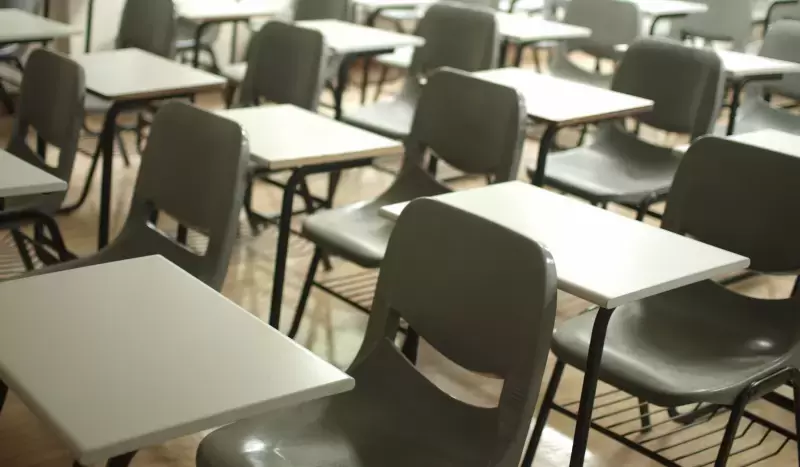
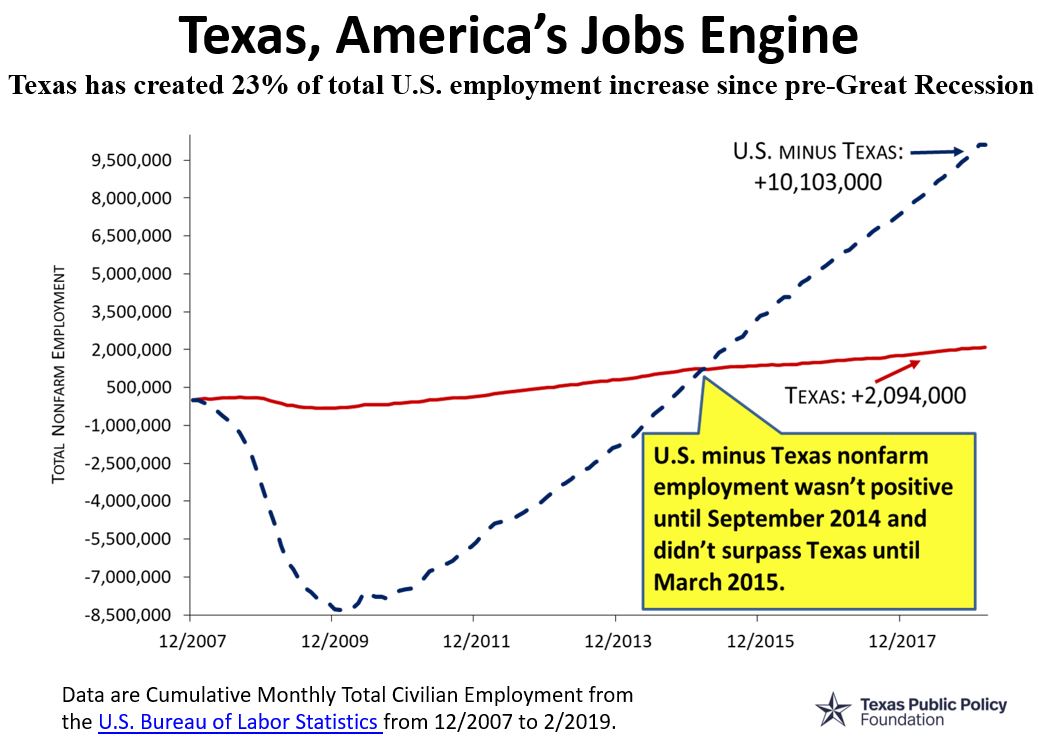

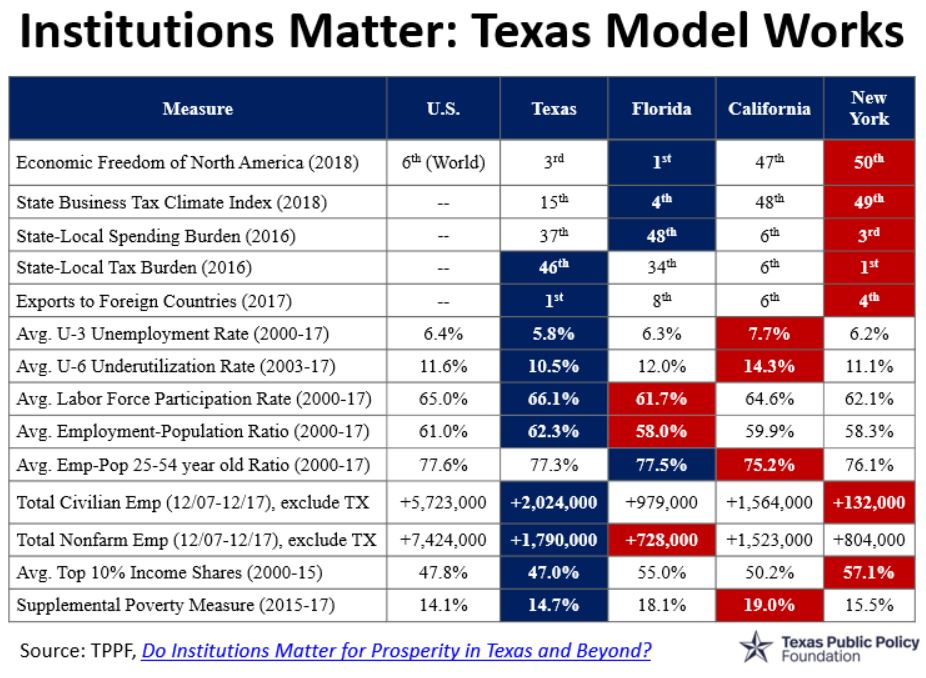
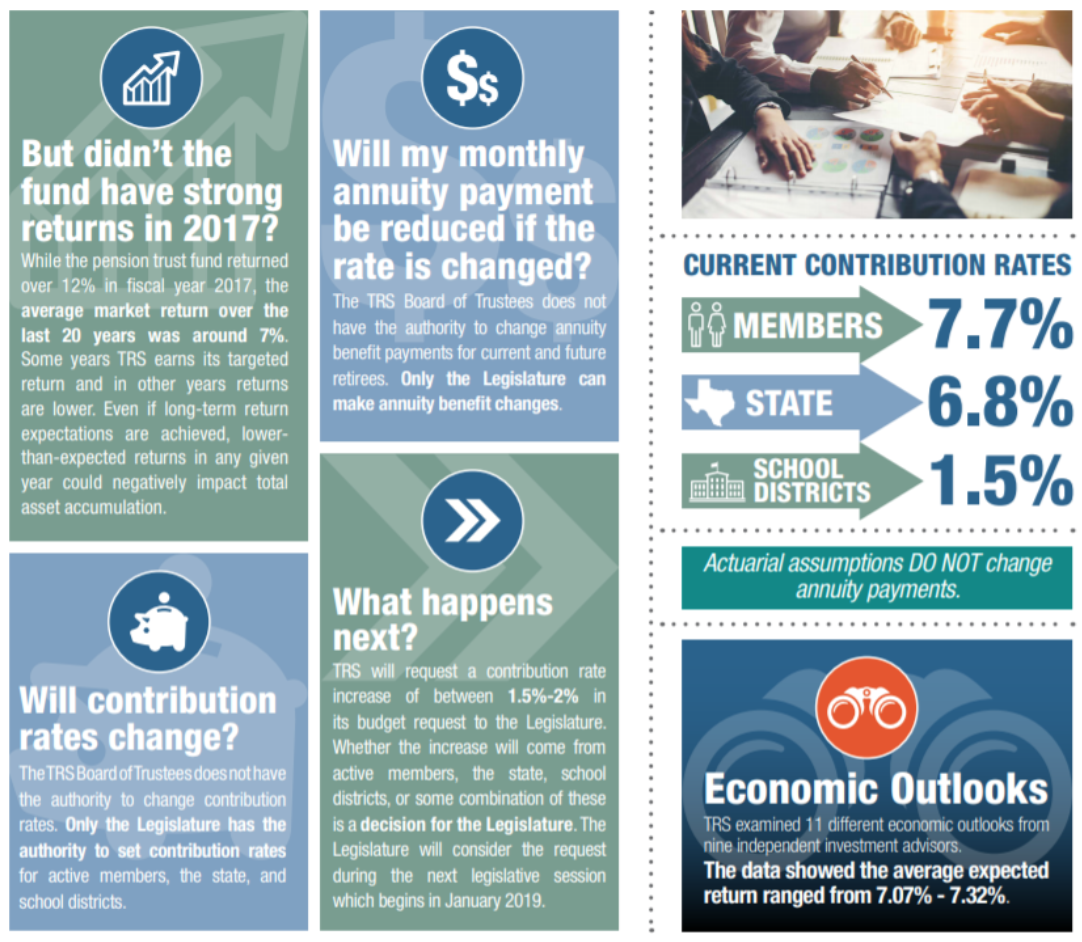
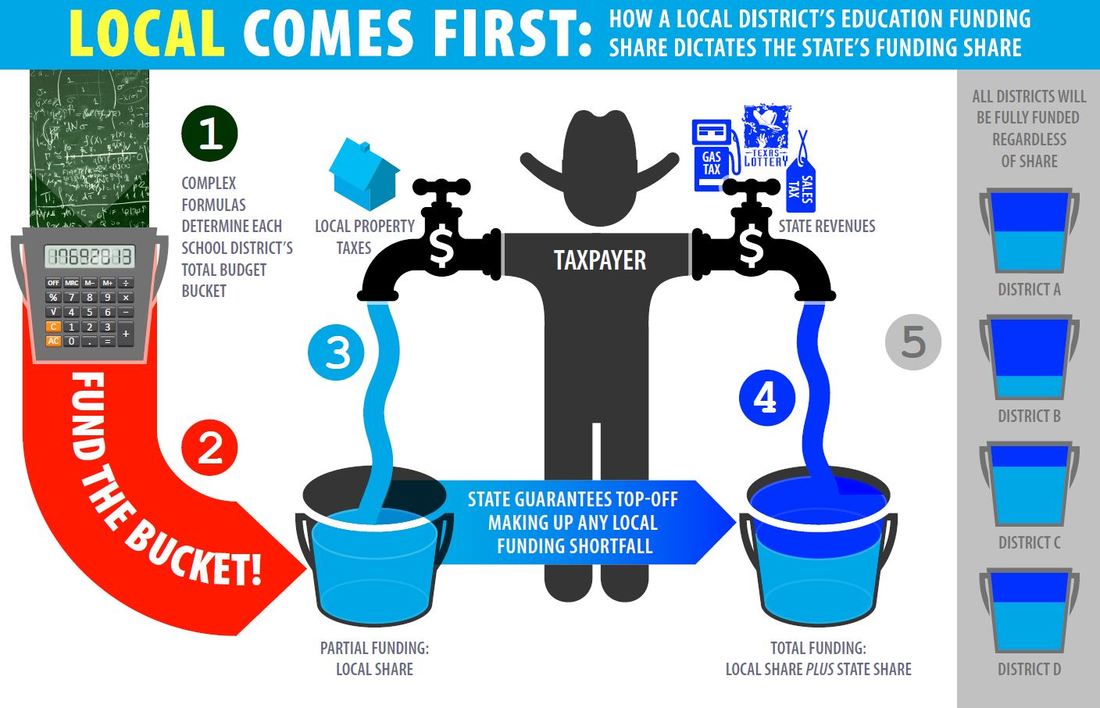
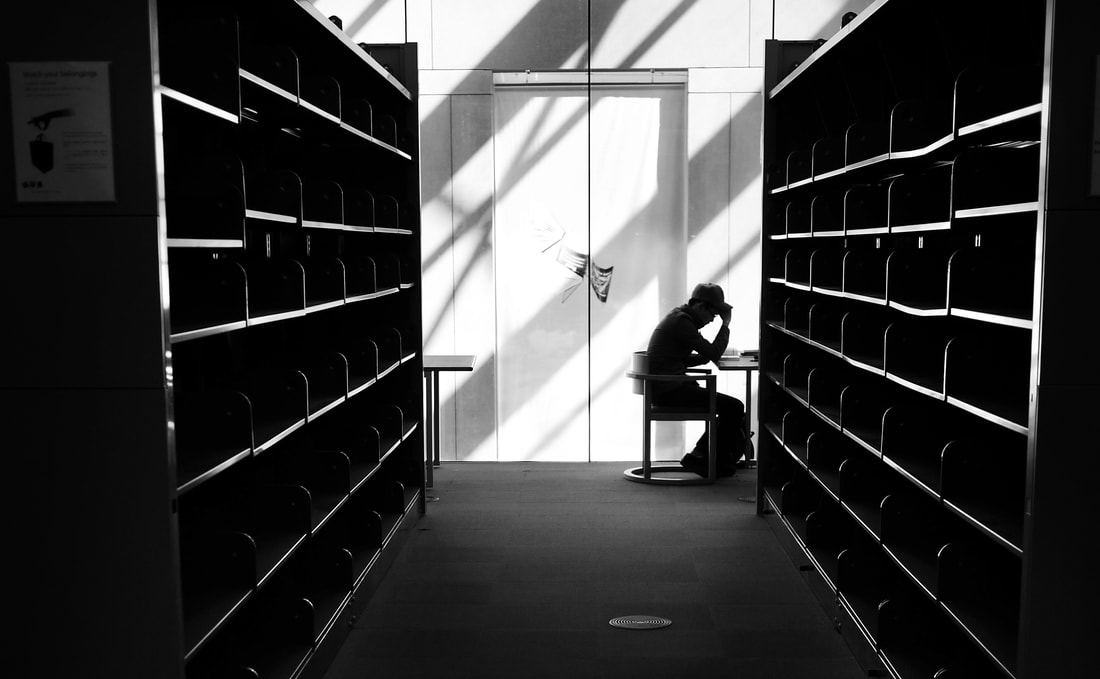
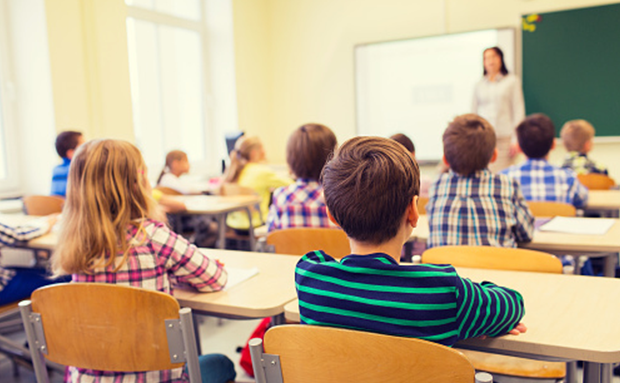
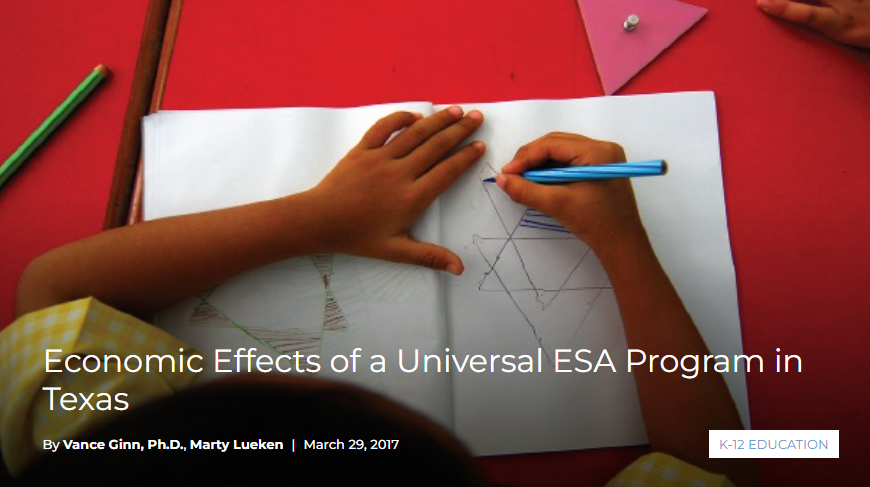

 RSS Feed
RSS Feed